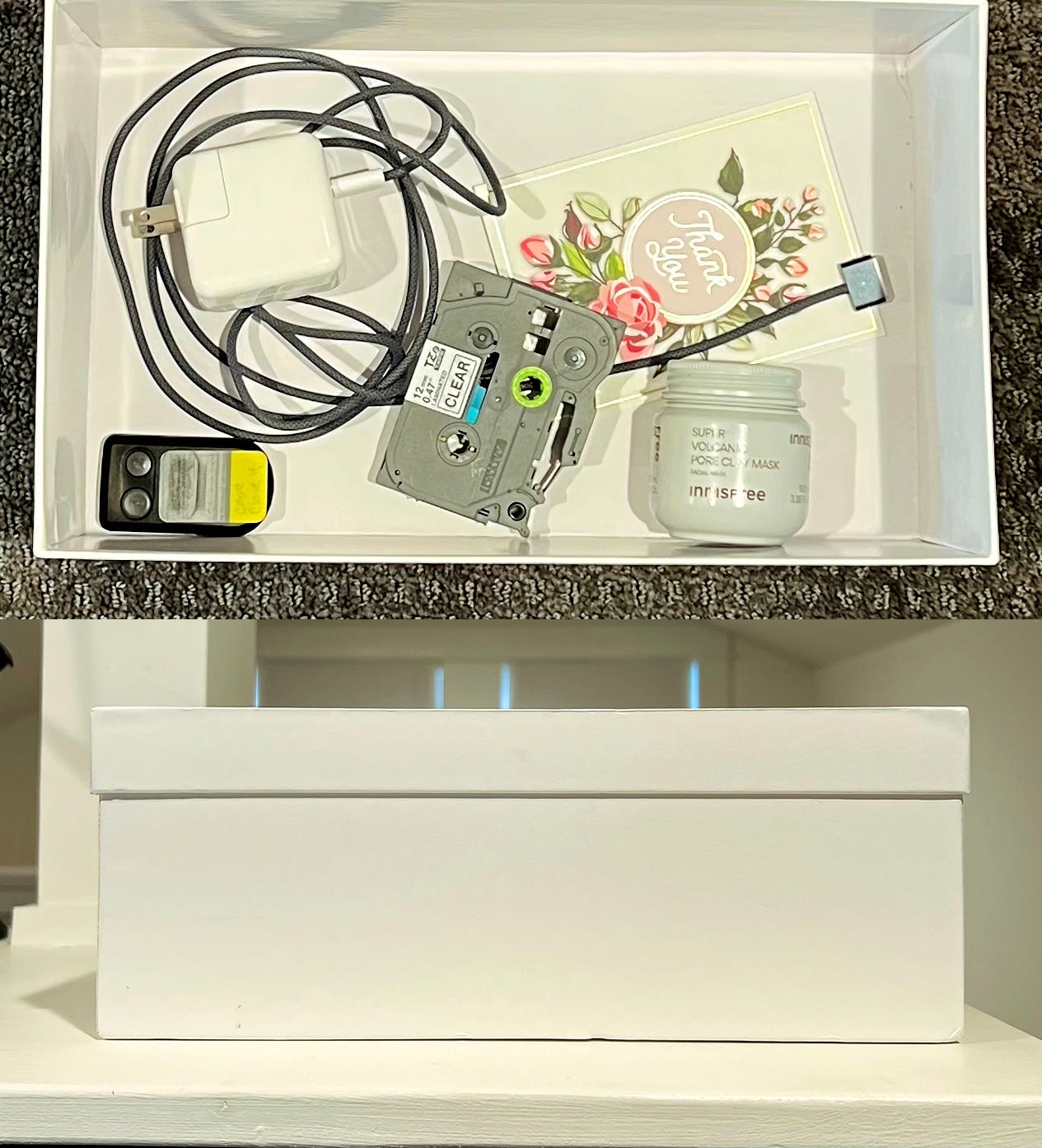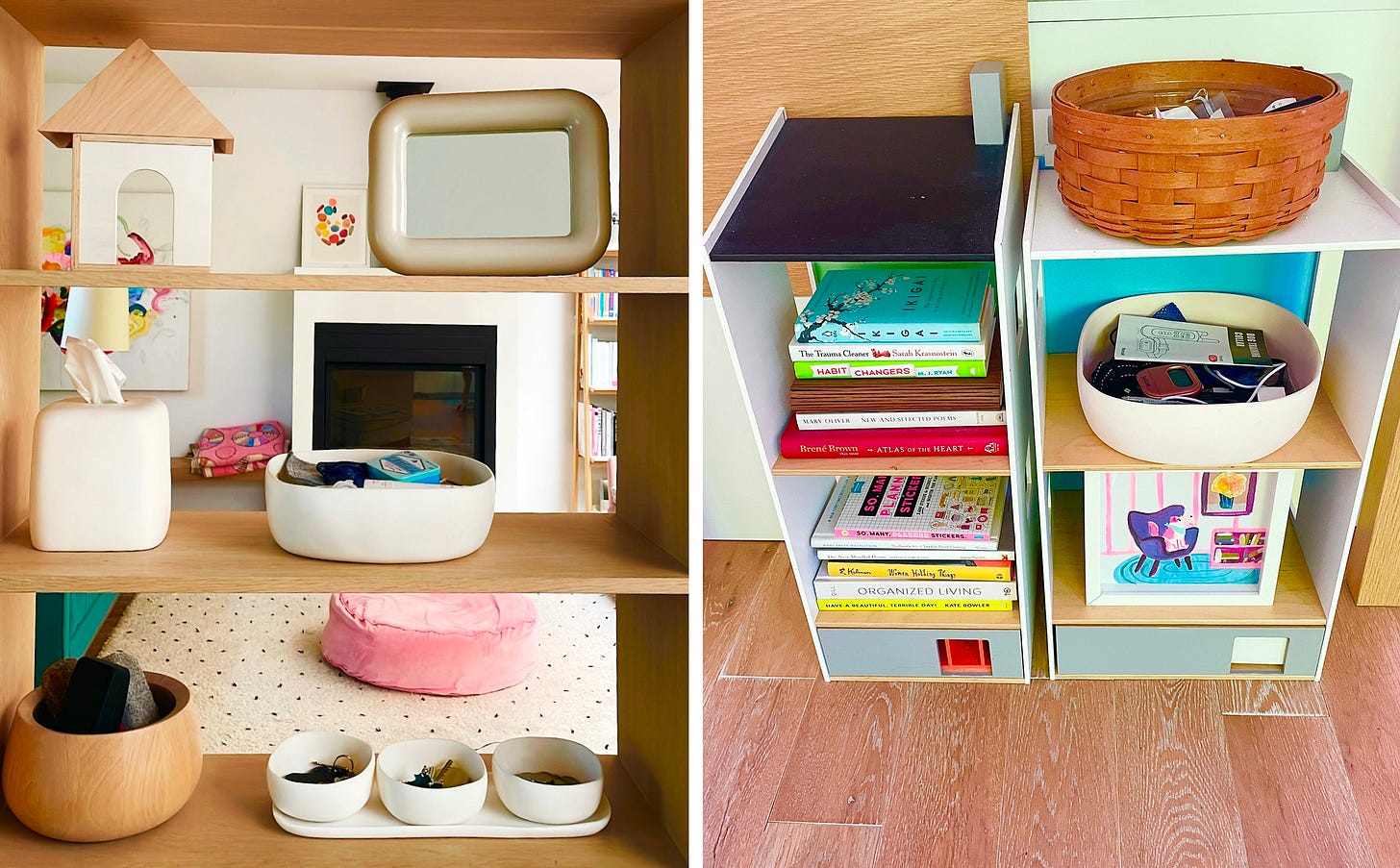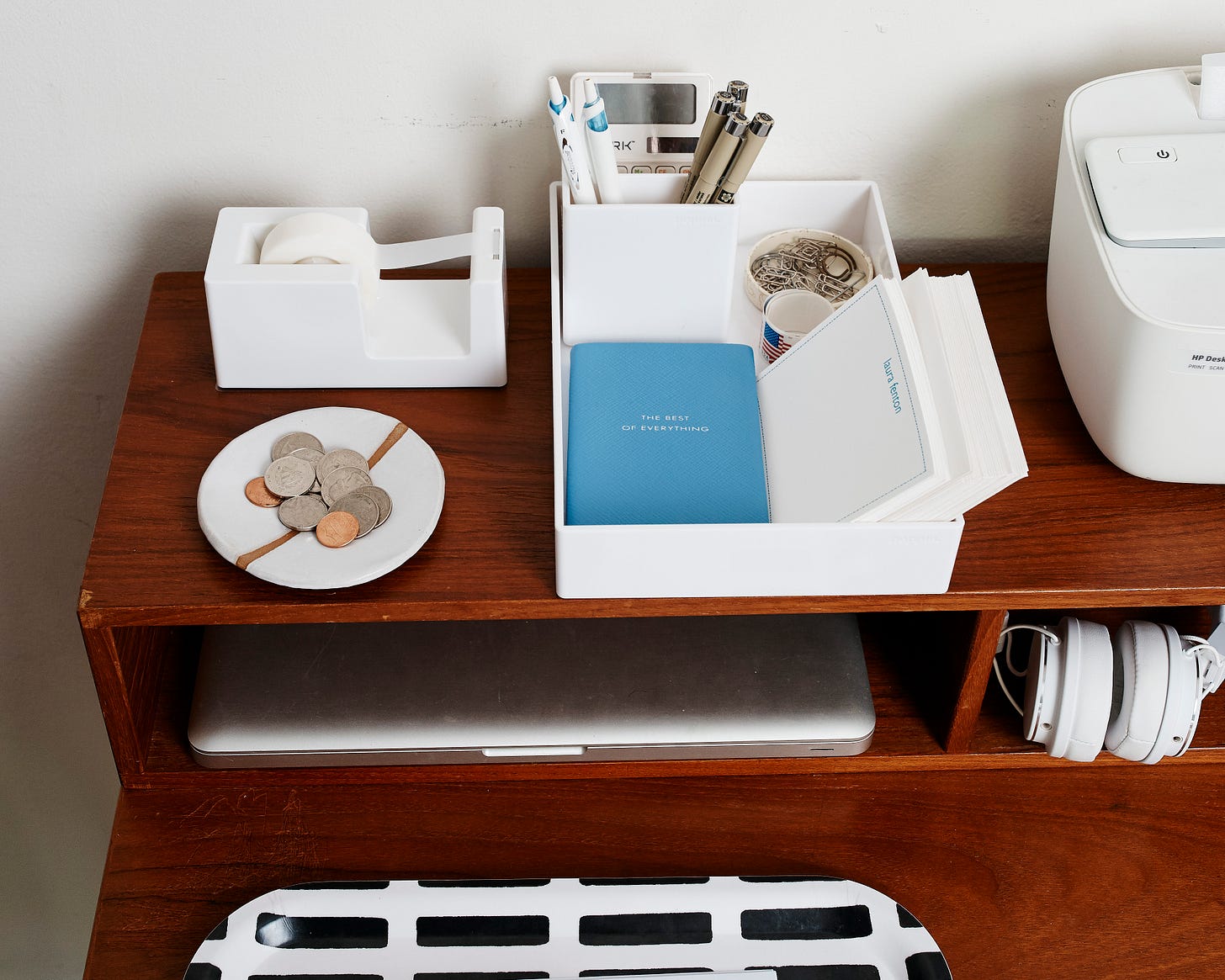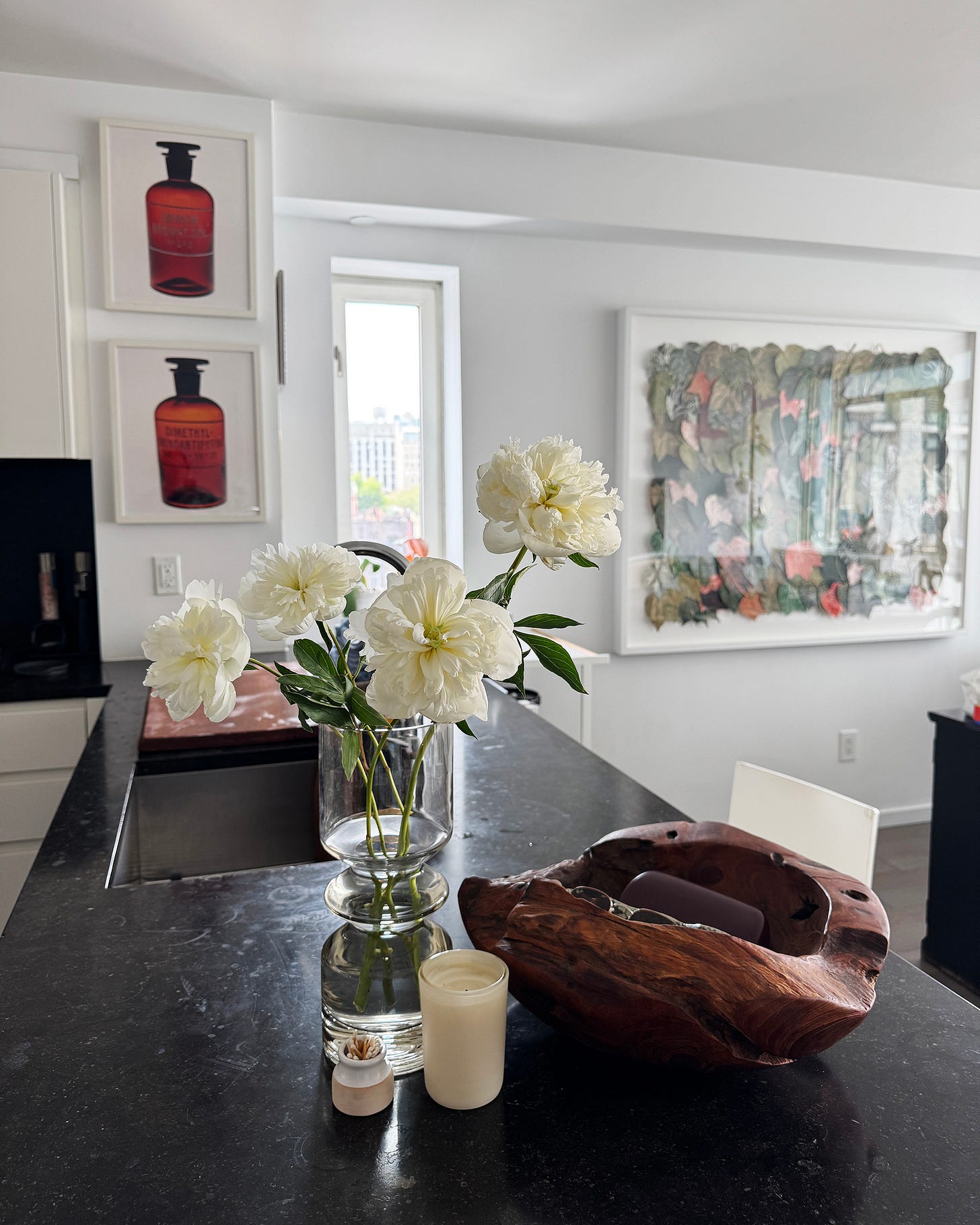Q & A: What do you do with everyday clutter?
Setting up systems and reducing visual clutter is the key.
Q&A is an advice column for paid subscribers. Once a month, I answer a reader’s question about living small and invite the community to weigh in with ideas too. For this month’s installment, I called on six home experts to share their advice too.
Q: Do you have any tips for what to do with the essential but annoying everyday clutter? For example, reading glasses, computer cables, chargers, chewing gum, pens. They just end up on our table and fill me with rage!
A: I empathize so much with this reader’s question: I, too, hate this kind of daily clutter. And while “rage” might seem like a strong word, we’re living in stressful times, which can make minor irritations seem huge.
I have come up with a few solutions for essential but annoying everyday clutter in my own home, but I knew this question merited more than my personal expertise because I’m still struggling with this! So I called on the most organized friends of the Living Small newsletter to get their advice. (They offered so much that it doesn’t fit into the email size limits, so you may have to read the end in a browser.)
Professional organizer and author of Decluttered: Mindful Organizing for Health, Home and Beyond, Jenny Albertini did a good job of explaining what’s fueling this reader’s feelings, saying, “It sounds like this reader is very affected by visual noise1—as many of us are. And with good reason: Clutter signals to our brains that we have unfinished tasks, which often raises our stress hormone cortisol (an underlying cause for that rage level rising).”
Jenny suggests a fast fix for visual noise: Get a basket or box with a lid and store it where you see this clutter tends to collect. Then, just sweep those miscellaneous items into the box and set it aside until you can deal with it. So easy.

The longer term solution, Jenny explains, is to set up your home, so that there is one ‘home’ for each category of clutter (which PS, are often just things without a designated home). “Doing this also makes putting these items away an easier task,” says Jenny, “For instance if there is one drawer where chargers go and one place where gum is stored, then those items can be cleared from the table and put away in a few minutes.”
Read on for Jenny and five other home professionals’ suggestions for how to create these systems in your home.
Assess first
The first step to addressing this type of everyday clutter is to notice where it tends to gather in your home. Then, take note of what it is that’s piling up. These two pieces of information will be essential for setting up systems to corral the clutter.
Set up a “landing strip”
Next, think about what’s coming into your home. In his first book, Maxwell Ryan, the founder of Apartment Therapy, popularized the idea of a “landing strip,” a place near the entrance of our home to help us sort what is coming in from the outside world. He writes, “The Landing Strip is where you can lay things down and sort the mail along with your change, keys, and other odds and ends.... Just as a plane requires a long runway for landing, your Landing Strip needs to have plenty of room and be kept clear. Your Landing Strip should anticipate the sorts of things that you bring home each day.” That means a designated place to rest your keys, the mail, and whatever else regularly walks in the door with you. Maxwell suggests you could have a recycling bin right there for the junk mail and catalogs.
Delineate clear boundaries
Rebecca Enberg, who writes the newsletter Your House Machine, says the key to dealing with things you want to have at-hand is to create boundaries. “Part of what's annoying about these things is they pop up in random spots and there's a sense that there's no limit -- where will they turn up next, and in what quantity?” she says, offering the example of her own kitchen counter where she placed a tray to contain her daily vitamins and some personal effects.
Get yourself a clutter collector
My friend Tinka Marham Piper subscribes to an idea similar to Jenny’s fast-fix shoebox or Rebecca’s kitchen tray, but she affectionately calls it a “clutter collector,” basically a basket, bin or bowl permanently committed to containing this sort of clutter in the place where it gathers. Our mutual friend Shira Gill employs a similar strategy in her living room, using an oversized woven basket as a stylish catch-all for essentials like reading glasses, chargers, and pens.

Consider creating a “home base”
Tinka suggests designating a single "home base" for these everyday essentials near where they're most often used. So, instead of having things scattered everywhere, a central, designated spot keeps them organized and accessible. For example, Tinka has a “home base” set up in her kitchen with clutter collectors for both her daughter and husband.
Try a kitchen island catchall
Kitchen counters and especially a center island tend to be hotspots for clutter. Both Tinka and Diane have solved for this inevitable pile up by positioning a clutter collector right in the middle of their kitchen islands. “Try using a bowl, tray, basket (something that you like!) on a kitchen counter,” Tinka says.
Be deliberate with drawers
Drawers are, of course, a great place to tuck away everyday clutter. However, “Furniture with small drawers can often get filled with the flotsam and jetsam,” says Diane Lowy, a professional organizer in New York City. “These are great spots to set up deliberately with daily items,” The key, she says, is to specifically designate exactly what goes in each drawer. Diane uses Bisley multidrawer cabinets for household items that are used less frequently like printer paper, scissors, batteries, packing tape, screwdrivers, post it notes, and permanent markers.
Shamika Lynch, the interior designer behind Maximizing Tiny (featured in the newsletter last summer) agrees and recommends diving the interiors of drawers with bins from the Container Store. Shamika even has a special charging drawer with a multiple USB port charger tucked inside for charging and cell phones. “Admittedly, it gets messy inside, but when it’s closed, it looks uncluttered,” she says.
Read on for five more expert tips, suggestions from the Living Small community, and this week’s 3 More Things.




